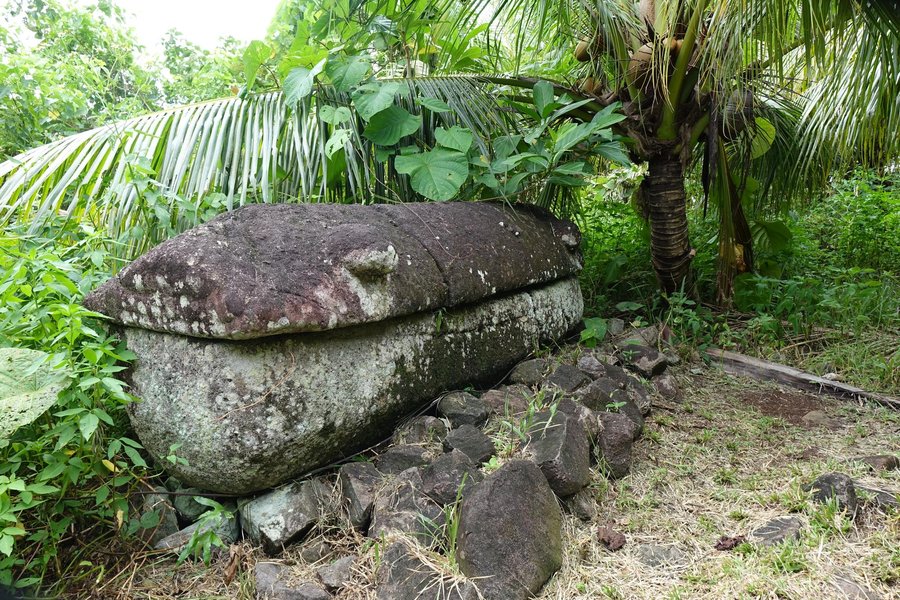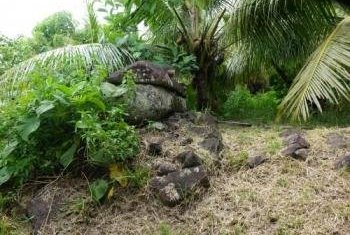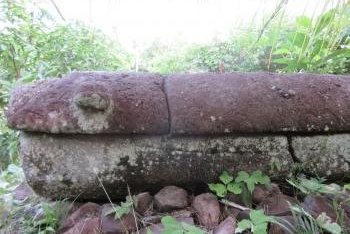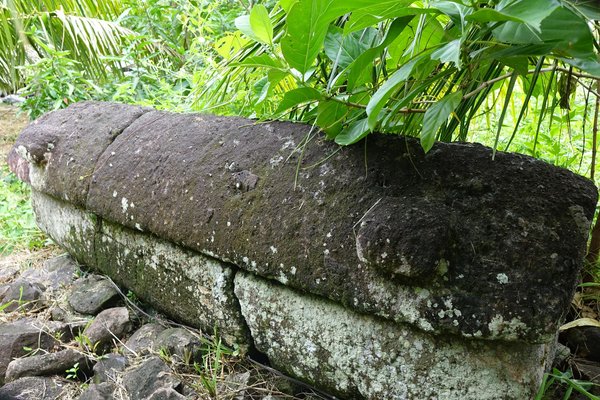Palau
Tet el Bad
Site Info
Official Information
- Full Name
- Tet el Bad (Stone Coffin) (ID: 1933)
- Country
- Palau
- Status
-
On tentative list 2004
Site history
History of Tet el Bad
- 2004: Added to Tentative List
- Added to tentative list
- Type
- Cultural
- Criteria
Links
- UNESCO
- whc.unesco.org
All Links
UNESCO.org
- whc.unesco.org — whc.unesco.org
Community Information
- Community Category
- Secular structure: Burial
Travel Information
Recent Connections
News
No news.
Recent Visitors
- Christoph
- Pieter Dijkshoorn
- Christravelblog
- Bram de Bruin
- Stanislaw Warwas
- Svein Elias
- Randi Thomsen
Visitors of Tet el Bad
Community Reviews
Show full reviews
Tet el Bad is a very strange Unesco tentative site. It is a rectangular stone coffin or sarcophagus located on top of a raised platform behind the chiefs’ meeting house in Ollei traditional village in Ngarchelong State. The stone coffin is a fine example of expert carving of a sarcophagus with both the casket and the lid made of andesite rock. The coffin has a length of 233 centimeters and a width 66 centimeters and a height of 40 centimeters.No human remains have been found inside, leading to speculation about whether it was ever used or if the remains were removed or decayed beyond recognition. The absence of inscriptions or artifacts within the coffin leaves its story untold.This site was submitted to the tentative list in 2004, by a :Rita Olsudong Archaeologist, Palau". Nothing is noted in the submitted writeup on the significance of this site, or how it satisfies the criteria of outstanding universal value (OUV). Even if this is indeed significant, perhaps a better place to display it is in a museum, instead of leaving it exposed to the elements, with no explanation panels and little indication of maintenance or visitor management. When I mentioned this to a site caregiver of another attraction, she commented that the coffin could have spiritual significance to the local community, and possibly a relic related to the demigods of the region. That could be the reason why it was left there and not taken to a museum.
Keep reading 0 comments
Palau’s Stone Coffin or Tet el Bad is one of the strangest entries on any Tentative List. It may be the smallest object in size: it measures 233cm by 66cm, at a height of 40cm. And it is a moveable structure, not only in theory but also in real life as it has been moved for research to a museum in Koror in the 1930s. It has stayed there until the 1980s, when it was transported back to its place of origin on northern Babeldaob. Despite its flaws, I am going to write a full 500 word blog post / review about it!
The coffin lies on Palau’s main island, Babeldaob. When I was young I was active with geofiction, and Babeldaob could have been a creation of mine (its name sounds like fiction already). Somehow the countries I created were always islands, often located in the Pacific. Always round or oval-shaped, with points of interest scattered around evenly across the surface. For sure I would have designed a flag for it, another one of my childhood interests.
Finding this stone coffin required some determination. I had rented a car from my hotel in Koror (on a different island, but connected to Babeldaob via a bridge), and drove all the way north to the ‘state’ of Ngarchelong. Possibly due to its long connection with the USA, Palau calls its communes ‘states’ – each often having not more than a few hundred inhabitants. There is only one main road into Ngarchelong, …
Keep reading 0 comments
I have an impression that some countries create their tentative WHS lists without taking care of justification and not aiming to really nominate the places for inscription in the future. It seems you be the case with Tet el Bad. The whole place is a small, abandoned stone coffin, located behind the assembly hall of northernmost village on Babeldaob island. It is a solid one hour drive from Koror. I cannot see any outstanding universal values of such an object, especially that it's meaning is not fully researched yet. Surprisingly, very close to the coffin are famous stone monoliths, much nicer and more worthy to visit. Looking from my naive unprofessional perspective, it might be much better to nominate these stones or mix the nomination with Tet el Bad.
Keep reading 0 comments
